Center Stack Instrument
Panel
This page created
5/22/99
Updated
3/14/04
Click on images for larger
photo.
Joe
Kendzicky of Atlanta, Georgia, rebuilt Stinson 108-1, N9084K,
for his Dad, Ray Kendzicky. He has
built a custom instrument panel that incorporates a center stack for avionics.
Many who have installed a center stack panel have modified the control
column (aileron and elevator controls) so that the controls behind the
panel will clear the avionics stack. Joe is installing a "short stack"
that does not require a modification to the controls. Here are some
photos of his installation (in progress) and a summary of the information
Joe sent to me.
Joe and Ray Kendzicky's "Short Stack" Panel
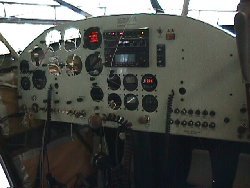 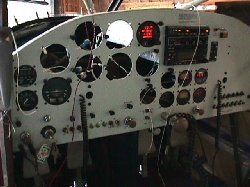
The panel was made of .080 2024
T3 aluminum, using the original panel as a template. Equipment includes
a Narco 135M audio panel, a King KLX-135A GPS/COM (serving as #1 navcom),
and a King KT-76A Transponder in the "short stack." You can see that
the placement of the radios places them above the control column.
The cutout for the center stack measures 5.5 inches high by 6.25 inches
wide. The stack is centered directly above the control column "T",
with the stack clearing the aileron cable turnbuckle by on half inch through
full travel.
To the left of the stack, a
Narco Escort II Navcom serves at the #2 navcom, chosen because of the limited
space for the short stack. Primary flight instruments are in a modified
"T" arrangement, with the airspeed indicator and turn coordinator
to the left of the attitude indicator and directional gyro offset downward
by about two inches to allow for the curve of the panel. Even so,
the curve of the panel was changed slightly as compared to the original
to provide more room above the control yoke shaft. At the center,
the panel is the same height as the original, but the panel is a bit taller
to the left and right of center. Location of the attitude indicator
and directional gyro is critical in order to clear the left control column
U-joint through full travel of the controls. Joe says, "have no idea
how many times I had this panel in and out of aircraft just to fit the
six primary instruments." The gyro instruments are driven by an 11
inch venturi.
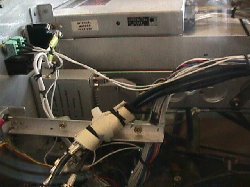 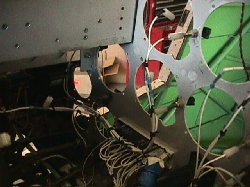 Other equipment includes an electric
turn coordinator, a Flightcom intercom (to the right of the avionics stack),
a Davtron OAT indicator, and PTT switches for pilot and co-pilot.
Joe estimates he has spent more than 300 hours on the panel and wiring
alone. Notice the post lights for lighting.
Other equipment includes an electric
turn coordinator, a Flightcom intercom (to the right of the avionics stack),
a Davtron OAT indicator, and PTT switches for pilot and co-pilot.
Joe estimates he has spent more than 300 hours on the panel and wiring
alone. Notice the post lights for lighting.
Only four instruments are original:
The airspeed indicator, fuel quantity, oil pressure, and tachometer
with
original time. All were
refaced by Keystone Instruments of Lock Haven, Pennsylvania. Keystone
is one of the few instrument shops that will overhaul the original Stinson
engine instruments. Keystone has the ability to silkscreen the Stinson
bow & arrow logo on the face of the instruments.
Before any wiring was started,
the panel face had to be painted. Joe used a light gray enamel, 3
coats, block sanded with 1000 grit. He then transferred the
switch and gauge markings with transfer rub-on lettering, then clear coated
, and blocked sanded with 1500 sand paper and hand rubbed. You can't
even feel the letters. The painting, sanding, and lettering took 20 hours.
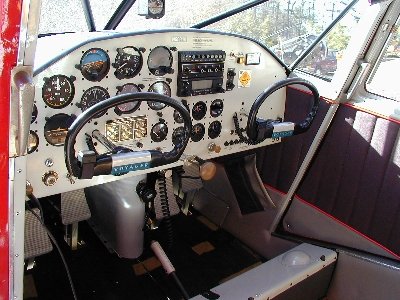 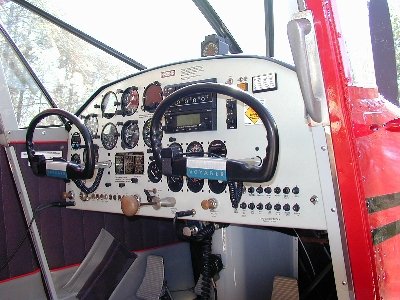
The photos above were
taken in February, 2000, shortly before the restoration was complete.
Back to the Hangar
9 Aeroworks Main Page
|
